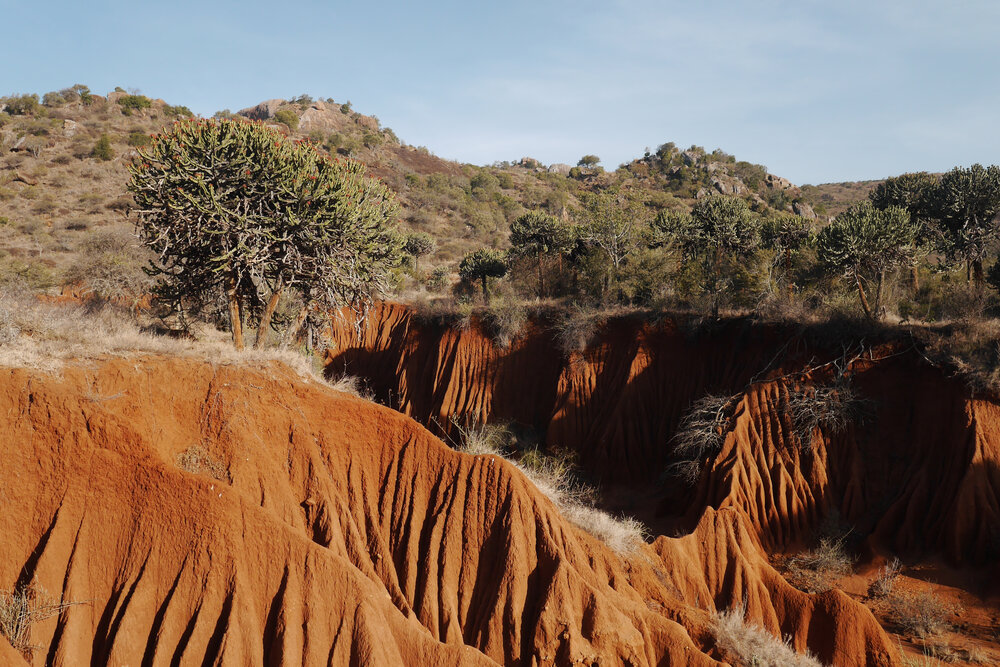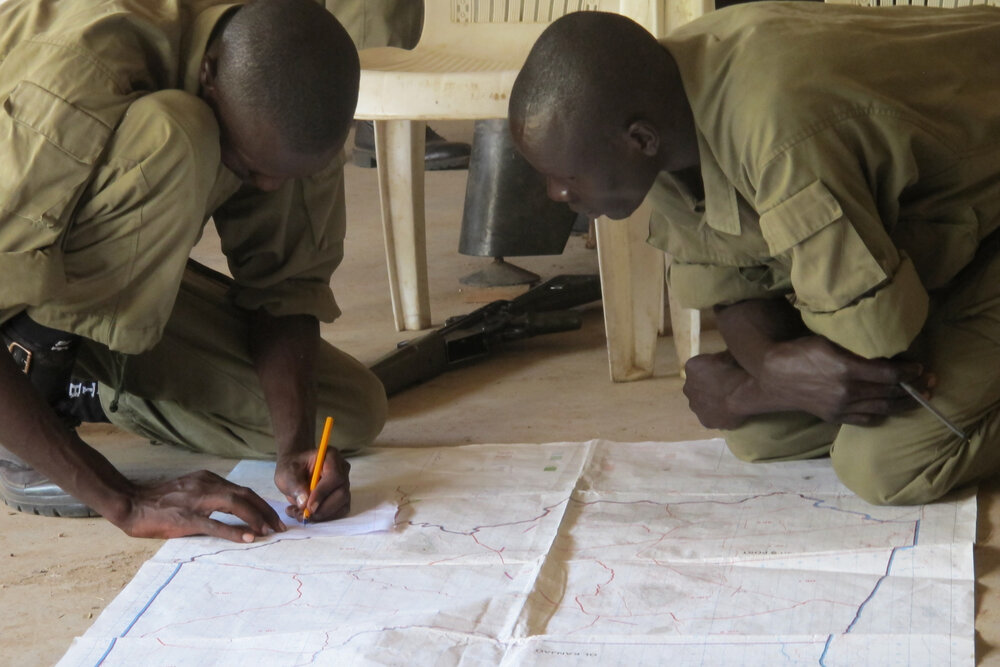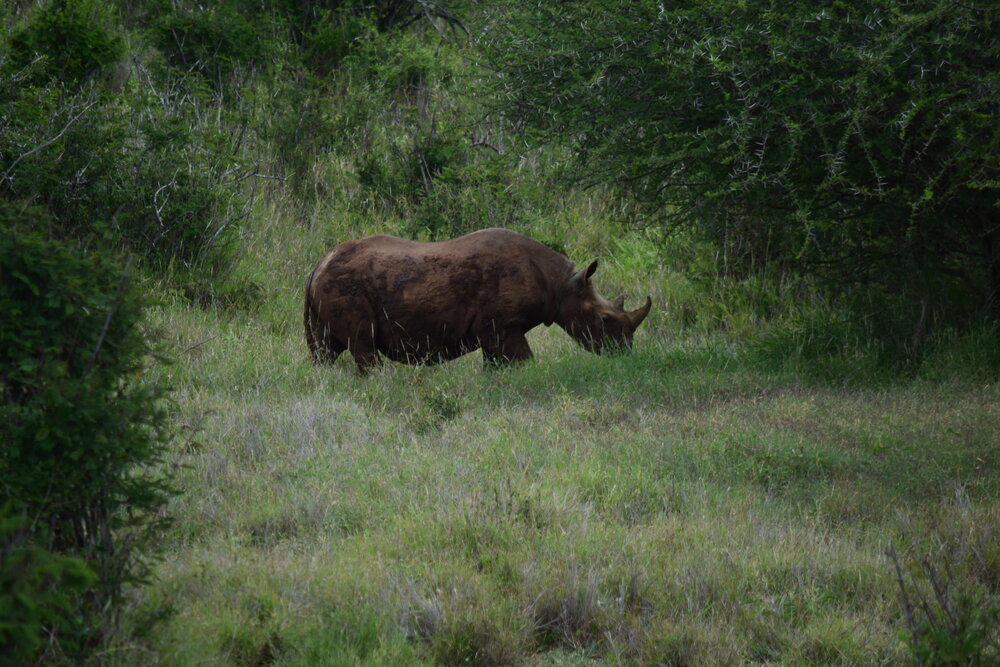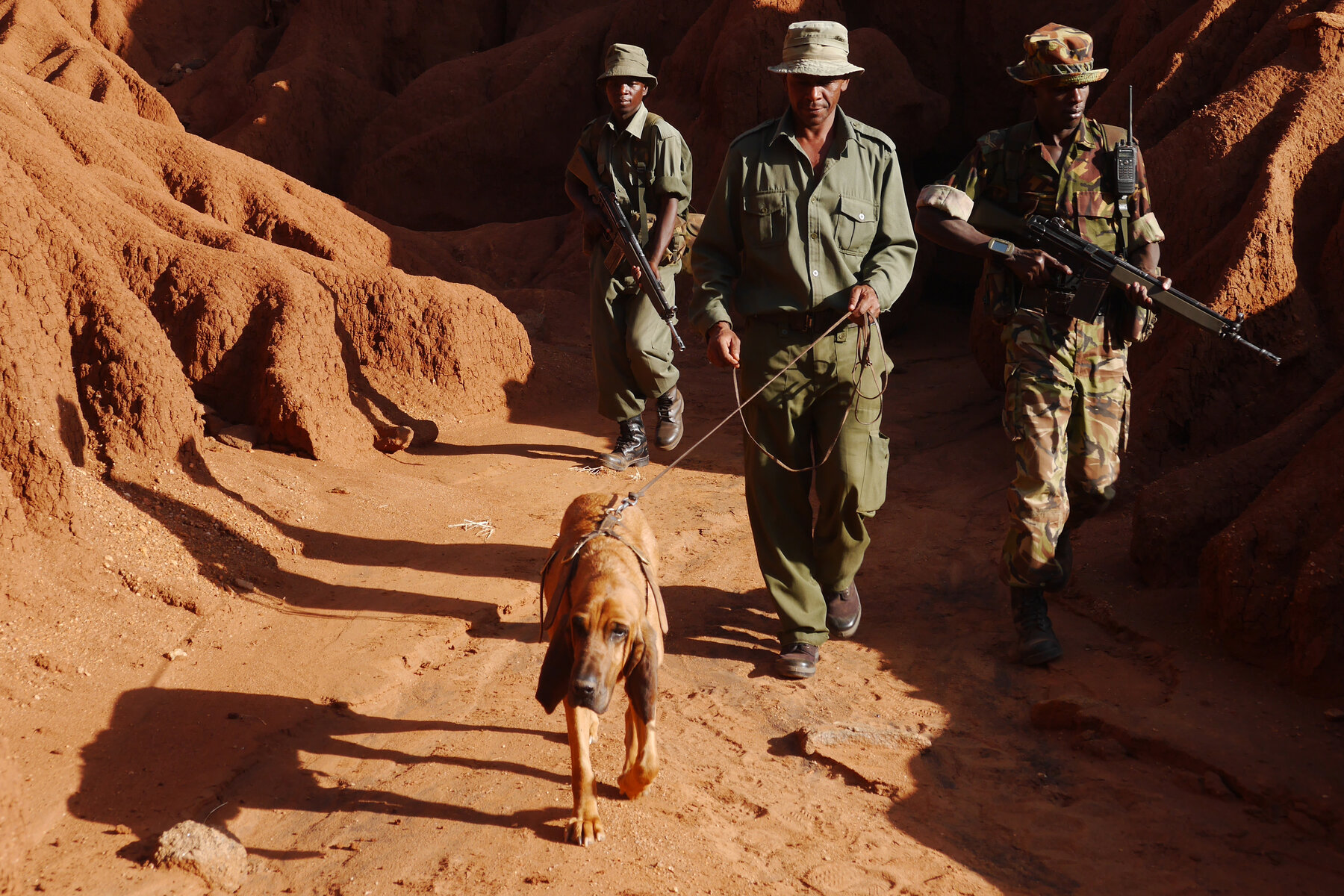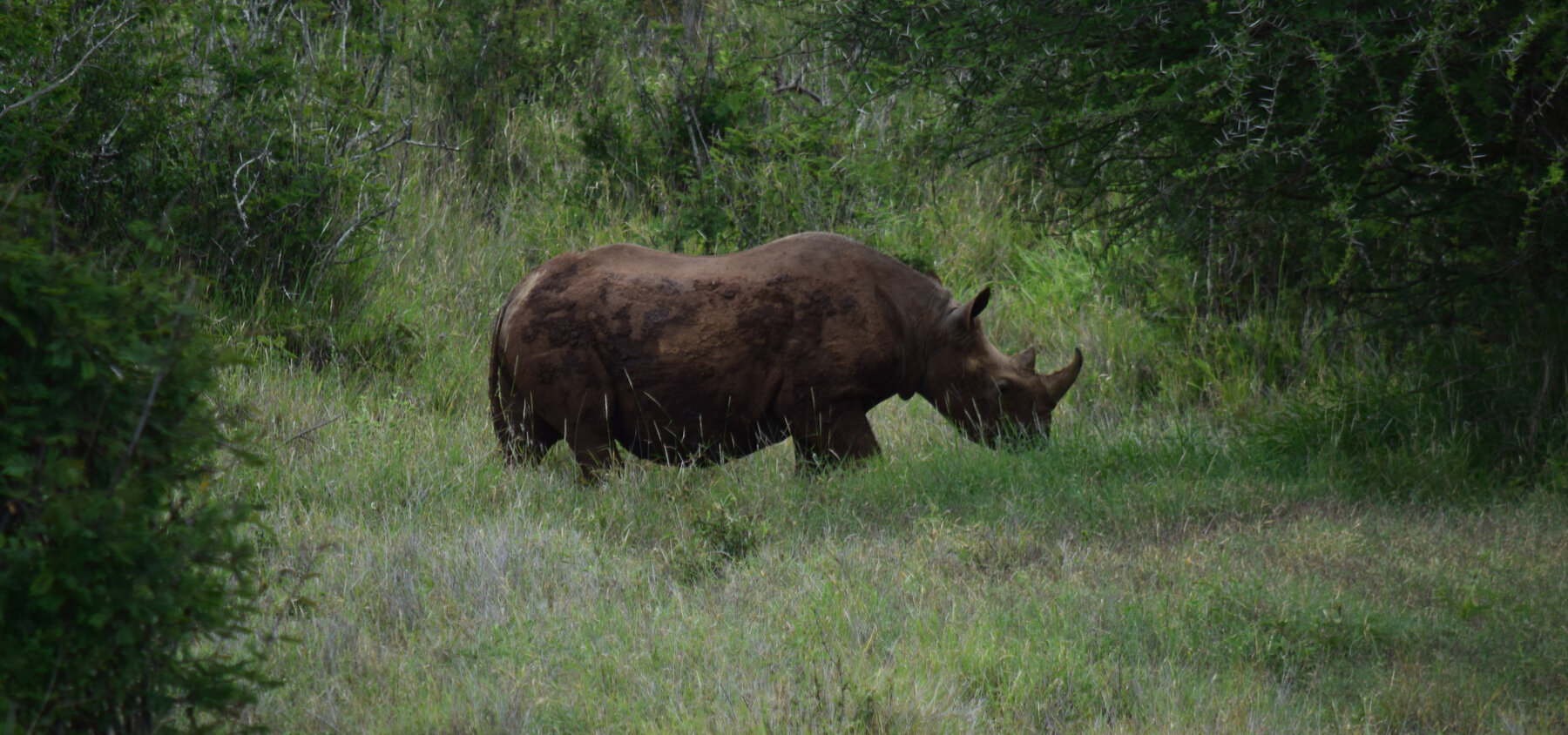
Eastern black rhino
Zoo Berlin supported the saving of the black rhinos of East Africa.
Project facts
- Project names
Save the Rhino International / Education for Nature Vietnam (ENV)
- Species
Eastern black rhinoceros (Diceros bicornis)
- IUCN threatened status
Critically Endangered (CR)
- Project locations
Kenya, Tanzania, Vietnam, Hong Kong
- Greatest threat
Hunting for rhino horn
- Response
Training locals to work as rangers; improving the monitoring of protected areas; educating those living in rhino horn consumer countries; breeding reserve populations in zoos around the world
Threat Categories of IUCN

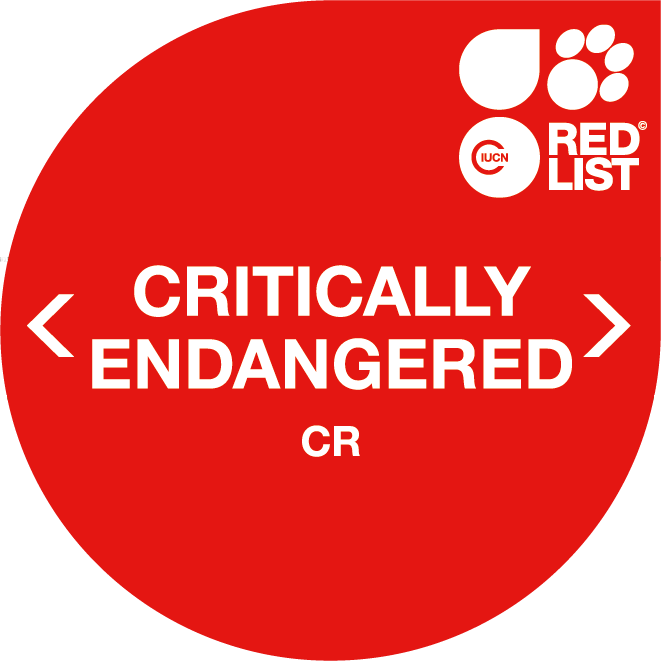
Rhinos in Berlin
Zoo Berlin is one of the most successful keepers of eastern black rhinos in Europe. These critically endangered animals have been present in Berlin since the 1960s, and the first calf was born here in 1981. Since then, Zoo Berlin has regularly welcomed Eastern black rhino babies into the world. Berlin has also been responsible for managing the international studbook for the eastern black rhinoceros since 1966 on behalf of the World Association of Zoos and Aquariums (WAZA) – the umbrella organisation for zoos and aquariums around the world. In cooperation with many other partners, Berlin’s zoos are actively working to protect the eastern black rhino as part of the broader European Endangered Species Programme (EEP).
At home in East Africa
The eastern black rhino subspecies was once found across Sudan, Ethiopia, Somalia, Kenya, Tanzania and Rwanda. Today, however, it has already been wiped out in the majority of those countries. Alarmingly, the eastern black rhino population has declined by 90 percent in recent decades. The last confirmed sighting of the animal in Rwanda was in 2007. A successful eastern black rhino population has been established in a private nature reserve in South Africa, outside their natural range. Including those still living wild in Kenya and Tanzania, there are an estimated 740 of the rare rhinoceroses left on the African continent. As a result, they are listed as “Critically Endangered” on the IUCN Red List of Threatened Species.
Only hunted by humans
Adult rhinos have no natural enemies – their one predator and the greatest threat to their survival is humans. Since 2008, southern and eastern Africa has been experiencing unprecedented levels of poaching. The losses are even more drastic than those witnessed during the crisis of the 1980s, impacting not only the black rhino, but also the white rhino and the African elephant. In the last ten years alone, poachers have killed more than 7,000 rhinos.
The rise of the rhino mafia
The rampant poaching is the result of a rise in demand for rhino horn in Asian countries, where it is more expensive than gold. When ground into a fine powder, rhino horn is regarded as a panacea for all manner of ailments and illnesses by people in many Asian countries – particularly Vietnam and China. This billion-dollar business is based purely on superstition, as rhino horn is made of keratin – the same material as human fingernails. But wherever there is big money to be made, organised crime is never far away. Unlike during the poaching crisis of the 1980s, the poachers active today have a mafia-like organisation and are very well equipped. Although there are already numerous national parks in Africa that are supposed to provide the wild animals with the protection they need, criminal gangs are only too willing to infiltrate these protected reserves in order to get at their prey.
Efforts to save the rhino
Zoo and Tierpark Berlin are contributing to three different strategies in an effort to save the black rhinoceros: protecting the animals living in Africa, working to reduce the demand for rhino horn, and breeding black rhinos outside of their natural habitat. To tackle the root cause of the problem in Asia, Zoo and Tierpark are working closely with established non-profit organisation Save the Rhino International and with Education for Nature Vietnam (ENV).
Immediate protection thanks to rangers
The first step in protecting these rhinos from poachers is to provide them with “bodyguards” that can keep watch over their home day and night. Our partner Save the Rhino International has been working patiently and tirelessly for decades to protect the endangered black rhinos, including those living in one of Kenya’s oldest and most successful reserves – the Ol Jogi Wildlife Conservancy. Thanks to its innovative ring fencing system, Ol Jogi reported no losses to its rhino population in the years 1980 to 2011. More recently, however, instances of poaching have increased. In response, the reserve hired more park rangers and introduced additional protective measures, such as teams of guard dogs. Zoo Berlin and the Zoo Stiftung Berlin foundation fund the training of Ol Jogi park rangers to help them combat poaching groups more effectively.
Reducing demand by raising awareness
The second strategy involves raising awareness about the impact of rhino horn consumption in Vietnam – the world’s second largest market for the horn. To this end, Berlin’s zoos are supporting the work of Education for Nature Vietnam (ENV), which was founded in 2000 as Vietnam’s first nature conservation NGO. The funding has been used to finance measures such as public outreach campaigns on television and other media, so as to draw attention to the plight of rhinos in Africa and the impact of the rhino horn trade in Vietnam. The main focus of the ENV’s educational work is to stress that rhino horn offers no actual medicinal benefit. The organisation has been highly successful in making the topic more prominent in Vietnamese media and in raising public concern about conservation issues. Alongside ministries and universities, the ENV’s primary focus is on schools in an attempt to positively influence the younger members of Vietnamese society. With the help of role play scenarios, competitions, debates, petitions, social media campaigns, high-profile testimonials, and thousands of volunteers, the ENV is successfully highlighting the link between horn consumption in Vietnam and the drastically shrinking rhino population in Africa.
Help from afar with zoo reserves
As well as supporting this work in Africa and Vietnam, Berlin is also making an important contribution to the survival of the black rhinoceros back here in Europe. Berlin’s zoos are responsible for managing the international studbook for black rhinos and collecting data on all members of the species living in human care to form the basis of regional endangered species programmes. Programmes such as these help to create stable zoo-bred populations of many of the world’s threatened species. The various participating zoos consider and agree upon potential partnerships, then the zoo responsible functions as matchmaker – coordinating the pairings of all animals of a particular species living in European zoos. This role requires in-depth knowledge of any genealogical ties between the animals, and involves making recommendations and coordinating the entire zoo stock of a particular species. These so-called ex situ populations function as secure reserves for the threatened animals in the wild.
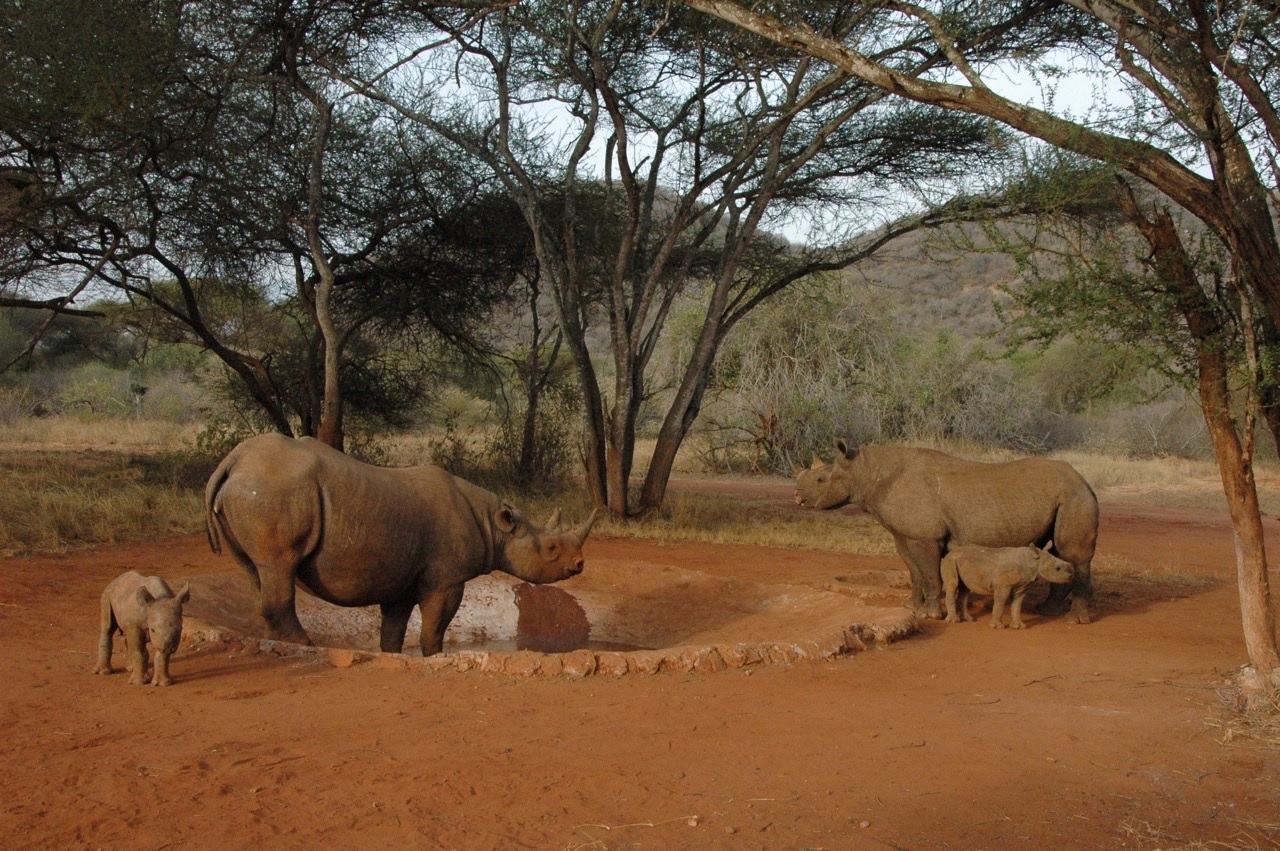
A glimmer of hope
The ideal combination of in situ and ex situ conservation efforts – which conservation experts call the One Plan approach – becomes most apparent when animals born in captivity are returned to the wild. Wherever possible and necessary, animals from these endangered species programmes are eventually reintroduced into their natural habitat. In 2012 for example, female black rhino Zawadi, born in Zoo Berlin in 2006, and other black rhinos bred in European zoos were transferred to Mkomazi National Park in Tanzania in the hope that they would start a new population. And the initiative was a success: In June 2016, Zawadi gave birth to her first calf! The latest census data from 2020 indicates that the population as a whole is slightly on the rise once again and that active protection measures are having an impact.
Photos: © Save the Rhino International
